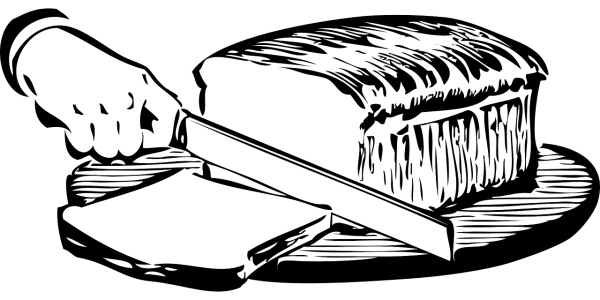Wie Sie ein 3D-Modell in 3D-Druck-Daten konvertieren können.
Was verstehen wir unter „Slicing“ im Zusammenhang mit dem 3D-Druck?
Es gibt zahlreiche Schritte, um von der Idee eines Objekts, das Sie erstellen möchten, zu ihrem fertigen, gedruckten 3D-Teil zu gelangen. Slicing ist der Prozess der Umwandlung ihres 3D-Modells in eine Datei, die ihr 3D-Drucker verstehen kann. Normalerweise exportieren Sie ihr 3D-Modell aus einer CAD-Software und verwenden dann eine Slicing-Software, um dieses Modell zu analysieren und den Werkzeugweg für ihren 3D-Drucker in einem anderen Dateiformat zu erstellen.
Der Begriff „Slicing“ wird verwendet, weil die additive Fertigung in der Regel Material-Layer übereinander verwendet, um das Teil physikalisch aufzubauen – jede dieser Layer ist wie eine „Scheibe“ des gesamten Modells.

Slicing Software.
Es gibt eine Menge hochwertiger, kostenloser Slicing-Software (bekannt als „Slicer“), da der 3D-Druck ursprünglich aus dem Open-Source-Bereich stammt. Die gängigsten Slicer sind Slic3r, Simplify3D und Cura, aber jeder Slicer sollte sich durch verschiedene 3D-Druckfunktionen auszeichnen. Jeder Slicer hat seine eigene, manchmal komplizierte Benutzeroberfläche, aber es gibt in der Regel ausreichende viele Tutorials und Internetforen, um sich schnell zurechtzufinden.
Die Alternative zu Open Source Slidern sind proprietäre Slicer, die in der Regel von 3D-Druckerherstellern entwickelt werden. Diese haben normalerweise vereinfachte Schnittstellen für eine bessere Benutzerfreundlichkeit, können aber weniger Optionen oder eine weniger detaillierte Steuerung bieten.
Slicing Einstellungen.
Die wichtigsten Slicer-Einstellungen beziehen sich auf die Steuerung der Geschwindigkeit, mit der der Kunststoff extrudiert wird. Diese wichtigsten Einstellungen sind Filamentdurchmesser, Layerhöhe, Extrusionsbreite und Druckgeschwindigkeit.
Typischerweise ist der Filamentdurchmesser über das Material und die Layerhöhe über das Teil gleich. Dann sollten Sie die Extrusionsbreiten und -geschwindigkeiten für jeden Merkmalstyp (z.B. Außenwand, Füllung etc.) gleich einstellen. Andere Slicer-Einstellungen, die es zu beherrschen gilt, um beim 3D-Druck effektiv zu sein, sind diejenigen, die die Erzeugung des Trägermaterials steuern. Diese ermöglichen Überhänge und Brücken, die für Druckteile kritisch sind, ohne dass sie nachträglich bearbeitet werden müssen.
Das Testing ist der einzige effektive Weg, um Slicer-Konfigurationen zu erstellen, da Slicer-Konfigurationen von Drittanbietern möglicherweise nicht so effektiv auf ihrer speziellen Maschine funktionieren. Dies gilt für proprietäre Slicer und Drucker wie die SAAM-Serie mit automatischem Cloud-Slicing mit CICloud. Der beste Tipp, um tolle Slicer-Konfigurationen zu erstellen, ist ein einfacher Start. Isolieren Sie die Funktionen, die Sie am meisten schätzen, fangen Sie bei den einfachsten an und arbeiten Sie sich zu den schwersten durch. Zudem sollten Sie diese Einstellungen mit möglichst vielen 3D-Drucken validieren.


